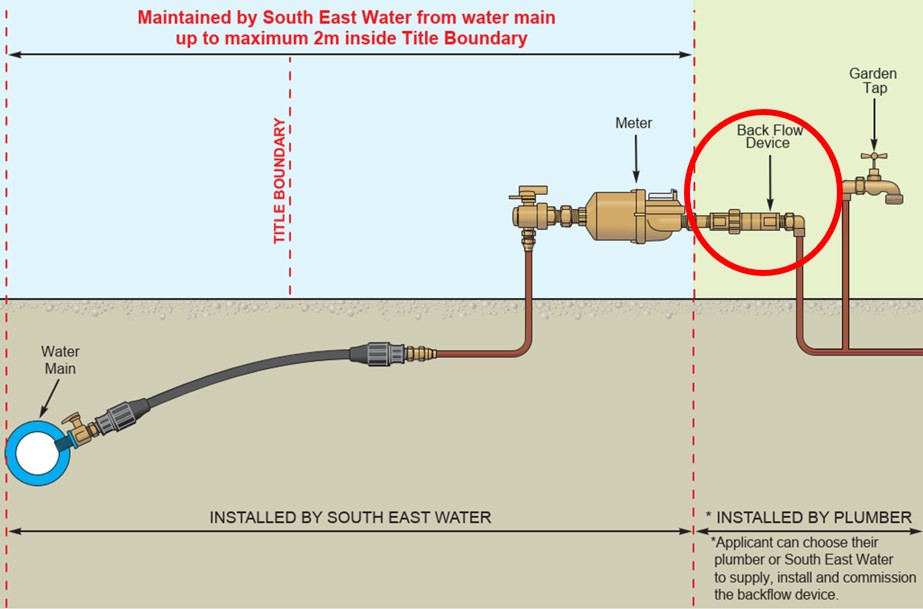Backflow prevention
What is backflow?
Water usually flows to your property at a consistent pressure, so you’ll have the same water pressure from your taps and fixtures every day.
If the pressure in the pipes is reduced, it’s possible for contaminated water from your property to be drawn back into the water supply system. This is called backflow.
Backflow can happen when:
- a water pipe bursts nearby
- water is pumped from the main water supply for fire fighting
- a customer uses water at a higher pressure than what we supply
- high water demand from the main water system reduces water pressure to your property.
Backflow prevention
Backflow can pose a public health risk if pollutants or contaminants such as chemicals enter the drinking water supply from your property.
A backflow prevention device allows water to enter the property through the water meter, and prevents water from flowing back into the water supply network.
All water service connections need to be fitted with an appropriate containment backflow prevention device to protect the water supply network and our customers.
Read about what’s required for backflow prevention, device testing and backflow risk ratings in our Backflow prevention containment policy.

Backflow device testing
Most residential properties will be considered low risk properties. Devices installed in high or medium risk properties need to be registered with us, and tested at least annually by a licensed plumber endorsed for backflow prevention testing. This testing requirement is for:
- backflow prevention devices
- Registered air gaps
- Break tanks
- Testable fire service single check vales.
If you require a backflow plumbing contractor for this work please visit the Backflow Prevention Association website, the Master Plumbers website or South East Water’s Priority Plumbing website.
Resources for plumbers
If you’re a licensed plumber with backflow accreditation, we encourage you to use and return these forms for each of your backflow projects.